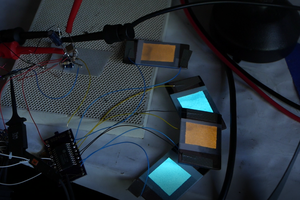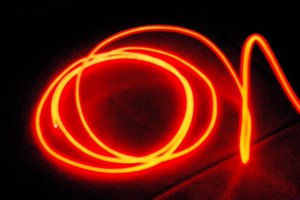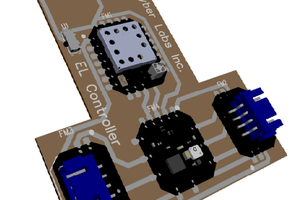MAX14521E based Mini EL driver will support up to 300Vpp and a combined load of 40+nF (with 3v3-5V input) which is more than enough to power several meters of EL wire. This Flex Module generates high voltage and care must be taken to insulate all outputs. Output castellations are spaced so that the circuit itself is safe, but do not drive output through a breadboard.
Any software related will be released under BSD or MIT license. SAAS or cloud based software will be AGPL.
 Chris Hamilton
Chris Hamilton


 Ben Krasnow
Ben Krasnow
 Arcu
Arcu

Chris, thanks for the update. It appears to have fixed the problem!